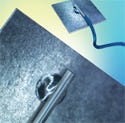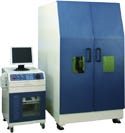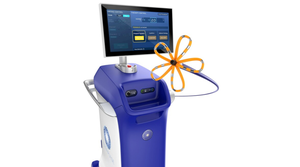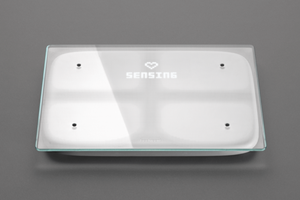Wireless data collected directly from patients during normal physical activities could enable the development of better knee implants
March 5, 2008
Originally Published MPMN March 2008
SPOTLIGHT
Joining Technologies
Microwelding capabilities
|
Specializing in laser energy and automation, a service provider has advanced its laser welding operations to address miniaturization and precision. On disparate materials, the company’s microwelding process can achieve spot welds on disparate metals smaller than 0.004 in. It enables attachment of platinum coils and electrodes, and machine components to copper, nickel, and nitinol conductors and core wires with diameters as small as 0.003 in. In addition to laser welding, the company also can support OEM design with prototyping.
Avicenna Technology Inc., Montevideo, MN
www.avicennatech.com
Laser welding services
|
Laser welding services are available from a contract manufacturer serving medical device OEMs primarily in the surgical tool and implant markets. Specializing in joining both similar and dissimilar materials, the company welds platinum, tantalum, gold, and stainless steel in a variety of sizes for a range of medical applications. Microjoining capabilities are also offered. The company is ISO 9001:2000 certified.
Pulse Systems, Concord, CA
www.pulsesystems.com
Contract laser welding processes
|
A service provider maintains that laser welding offers significant advantages over conventional gas tungsten arc and electron-beam welding methods for a number of critical applications, including medical device manufacturing. The 6 kW of peak power and tightly focused laser beam can yield aesthetic weld beads with a smaller heat-affected zone and a higher depth-to-width ratio than other welding techniques, according to the company. Process automation for diverse geometries is enhanced through the computer control of four axes of motion and the flexibility of a fiber-optically coupled welding head. Welding operations can be performed at high speeds in order to reduce lead times.
Fluid Automation Inc., Nottingham, PA
www.laser-weld.fluid-automation.com
Conductive adhesives
|
A line of electrically conductive adhesives and potting compounds is designed to form paths where hot soldering operations would be ineffective or impractical. Suited for bonding or sealing electrical components or wires that require heat dissipation, Syon products also mix and pour easily, fill voids, and cure with minimal air entrapment. The Tru-Bond 206A conductive adhesive solder is a pourable silver-filled liquid epoxide; the Tru-Bond 214 silver-filled epoxy adhesive is a nonsagging paste that creates conductive paths on circuit boards and prepares electrodes for capacitance and loss measurements; the electrically and thermally conductive Tru-Bond 215 copper-filled epoxy adhesive is suited for preparing and repairing conductive paths on circuit boards and for RF-shielding and heat-sink applications; and the Tru-Cast 111 high-density potting and casting resin is an aluminum-filled epoxide resin featuring thermal conductivity and a low coefficient of thermal expansion.
Devcon, Danvers, MA
www.devcon.com
UV adhesive and potting compound
|
Suited for medical device assembly, a one-component UV-curable adhesive and electronic potting compound is clear in color and low in viscosity. Unlike most traditional UV systems, the UV Cure 60-7155 is unaffected by oxygen, dark cures after UV exposure, and is low in odor and toxicity. It also exhibits low shrinkage, which enables secure adhesion to metal, plastic, wood, paper, or ceramic, according to the company. Additional properties of the product include the ability to cure shadow areas and fast cure times. The adhesive is awaiting Class VI approval.
Epoxies Etc., Cranston, RI
www.epoxies.com
Copyright ©2008 Medical Product Manufacturing News
You May Also Like







